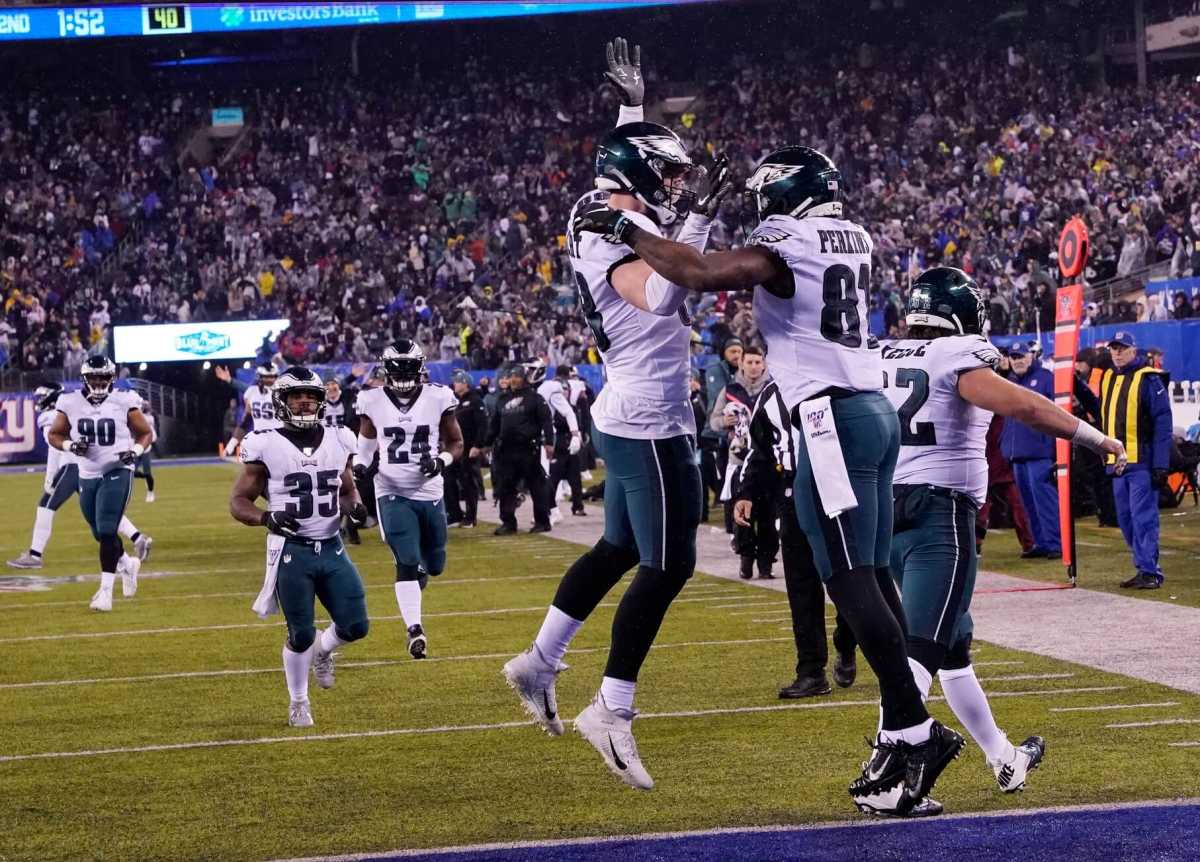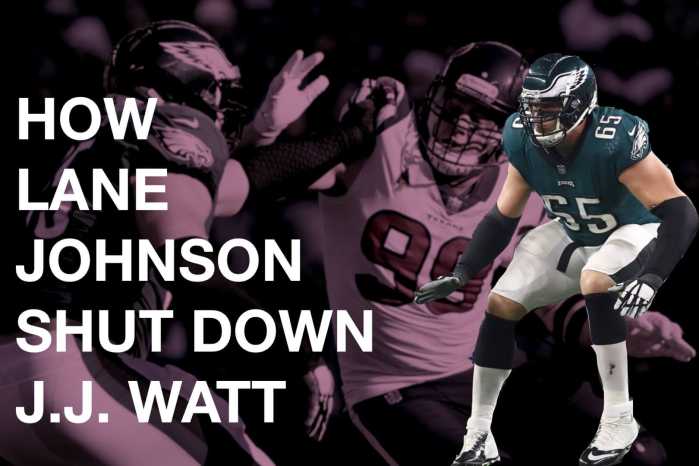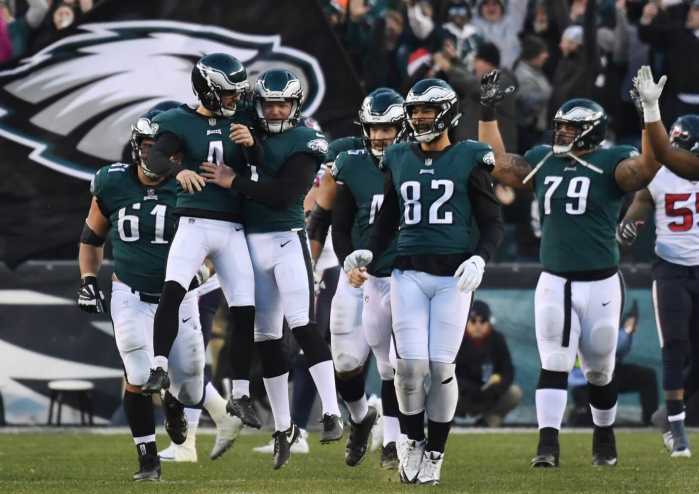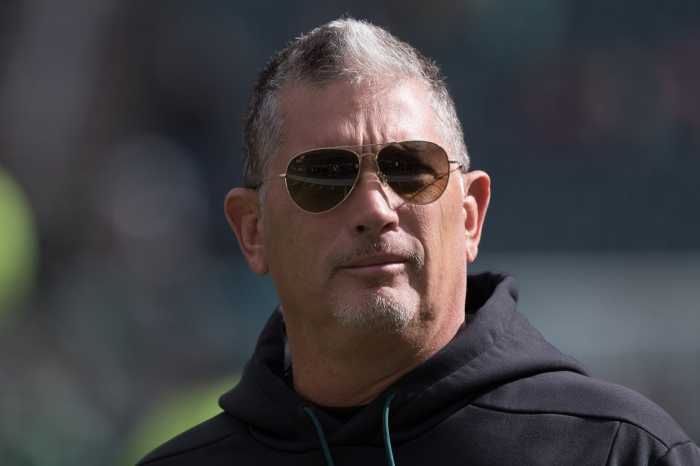Seahawks’ Offense vs. Eagles’ Defense
It’s no secret where the Eagles’ defensive strengths and weaknesses lie. I will take this time for a quick aside in order to draw your attention to a fantastic article written by PSN’s Jalyn Smoot which dives into the Eagles’ struggles in pass coverage:
The Seahawks passing attack has not been the team’s main focus this season, but has still been efficient and is helmed by the ever-electric Russell Wilson. They finished the regular season ranked 14th in net passing yards (3791) and their receivers accounted for 341 receptions (21st) on 517 targets (23rd) for 4110 yards (13th). Wilson managed a completion percentage of 66.1% (10th of qualifying QBs) and a QBR of 106.3 (5th). His efficiency, encapsulated by his 31:5 touchdown to interception ratio is magnified by a 6.0% touchdown rate.
The Eagles’ pass coverage, on the other hand, has been at-times abysmal. They allow a touchdown through the air on 4.7% of opponent’s attempts (21st) and have not been able to turn the ball over — 1.9% interception rate (23rd). Nevertheless, they rank 19th in total yards allowed and have permitted a completion percentage of just 60.9% (5th). That has translated into an average opposing QB rating of 90.8 (19th).
Line vs. Line
The Eagles defensive line was a mixed bag this season but has ramped it up when they’ve needed to. They rank in the top ten in both pressures, 154 at a 24.3% rate (both 9th) and QB knockdowns, 56 (3rd), 9.8% rate (6th). The team also tallied 43 sacks (13th) for a sack rate of 7.0% (12th).
However, despite generating pressure, the defensive line only managed 55 hurries (21st) at a rate of 8.7% (21st). Typical of Jim Schwartz’s defenses, the team does not rely on the blitz, but we have seen Schwartz dial it up more often this year, especially on third and fourth down. So much so that they have actually blitzed more than the Seahawks at a 26.8% rate (18th).
The Seahawks offensive line has rebounded somewhat from an atrocious season last year, but may be without some key starters. Starting tackle Duane Brown, starting Guard Mike Iupati, starting Center Joey Hunt and Guard Phil Hayes have all been on the injury list leading up to the game. That does not bode well for an already reeling offensive line.
As a group they have given up 71 hurries (30th), 58 QB knockdowns (28th) and 48 sacks (24th). That evens out to a 5.1% adjusted sack rate (30th). Nonetheless, despite being blitzed 221 times, the Seattle offensive line has allowed Russell Wilson an average of 2.4 seconds in the pocket — the same as the Eagles.
QB
Without a doubt, the Seahawks most dangerous weapon is their QB. He does a little bit of everything and rarely makes mistakes. A 76.1% on target rate (10th) speaks to that. On top of that, his talent as a passer is augmented by his ability to create outside the pocket. It’s no surprise that Wilson has scrambled 45 times this year (3rd) for an average of 7.0 yards per attempt (16th).
Being outside the pocket has its advantages, Russell has avoided his passes being batted down: 9 total (9th fewest). However, it also comes with more throwaways, to which Wilson had 20 (14th most), and bad throws — 18.4% (21st).
Wilson’s advanced statistics are characterized by the type of offense Seattle runs; one that is not afraid to take a deep shot. Seattle averaged 9.4 intended air yards (3rd) and 7.1 completed air yards per completion (4th). Even still, there is a certain je-ne-sais-quoi about Wilson’s aptitude at making incredible plays downfield when nothing seems available. Bad throws and throwaways aside, the Eagles will have to limit Wilson when he escapes the pocket. That extra 5-10 seconds can be excruciating for a secondary, especially one that loves to play man as much as Jim Schwartz does.
Skill Positions
In spite of a lack of experience, the Seattle receivers have been outstanding this season. Overall they have been the picture of reliability, with a 3rd best 3.4% drop rate. Although, the Seahawks penchant for lofting deep balls has limited yards after the catch, in which the team ranks 26th (1383). That’s still 4.1 YAC per reception, for those of you wondering. All things considered, Seattle has generated an underwhelming 190 first downs through the air (17th).
To nobody’s surprise, the Eagles have been relatively good at covering every position except opposing receivers. They have allowed only 65 receptions (8th), 681 yards (6th) and 4 touchdowns (5th) to tight ends. Unfortunately Seahawks’ Will Disley is out, and Luke Willson will be the starter, so the Seattle tight ends weren’t likely to be a huge factor anyways.
Philadelphia has been average against opposing running backs in the passing game, which had been an issue for them last season. They have allowed 87 receptions (18th) and 645 receiving yards (16th), but just one receiving touchdown (3rd) to backs this year. Seattle will be without their top three running backs, two of which are known to be dangerous in the passing game. However, rookie Travis Homer has shown some juice, picking up 56 receiving yards in the last two games.
The biggest issue for the Iggles will be the same as what is has been all year. They cannot seem to cover receivers. Jalen Mills’ presence may alleviate some pressure and Cre’Von Leblanc is getting healthy at the right time. Nonetheless, Philadelphia has allowed 195 receptions (18th), 2809 receiving yards (28th) and 21 receiving touchdowns (29th) to opposing receivers and will again have their work cut out for them against D.K. Metcalf and Tyler Lockett.
Rushing
Eagles’ Offense vs. Seahawks’ Defense
The Eagles’ rushing attack has been up and down all season, but they have seemingly found their groove over the last few weeks. Averaging 121 yards per game on the ground (11th) over the season, they have managed an average of 132 over the last three games. The team’s 454 rushing attempts ranks 11th and they have added 104 first downs on the ground (12th). The newfound duo of Miles Sanders and Boston Scott has been a revelation and with both Sanders and Howard healthy, the Eagles could have a solid day running against a very average run defense. Philly averaged 4.3 yards per carry (19th) on the season.
Despite facing the 26th fewest rushing attempts (388), Seattle has allowed 1883 rushing yards (22nd) — 117.7 per game. Over the span of the season, they allowed 4.7 yards per carry (28th). That number has jumped to 5.7 over the last three weeks, in part due to facing both the 49ers and the Panthers in that span. The team has also allowed the 3rd most rushing touchdowns in the league (22). The Seahawks will be without former Eagle Mychal Kendricks, which will not help matters.
Continued on the page below.
Mandatory Credit: Robert Deutsch-USA TODAY Sports



























